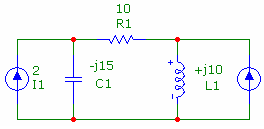1. Find the current through each component, in polar form, using mesh analysis. The source voltages are rms with an angle of 0 degrees.
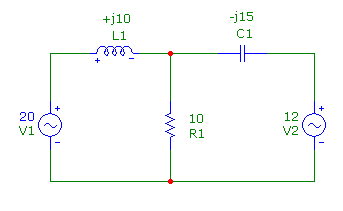
2. Find the current through each component, in polar form, using mesh analysis. The source voltages are rms with an angle of 0 degrees.
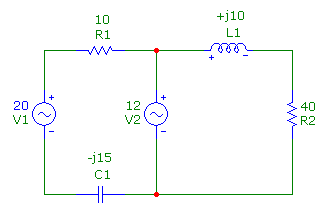
3. Find the voltage across each component, in polar form, using nodal analysis. The source currents are rms with an angle of 0 degrees.
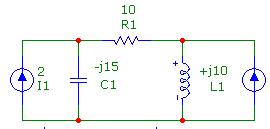
4. Find the voltage across each component, in polar form, using nodal analysis. The source currents are rms with an angle of 0 degrees.
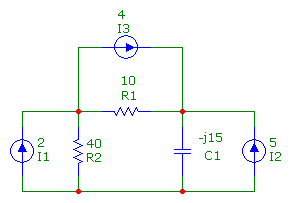
5. Perform some kind of source conversion and use mesh or nodal analysis to find the current through R1 or the voltage across R1. The source values are rms and at 0 degrees.
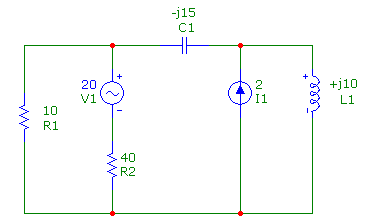
6. Find the current through each component, in polar form, using superposition analysis. The source voltages are rms, at 0 degrees.
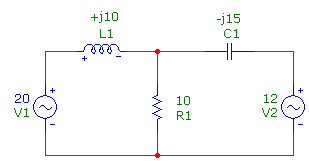
7. Find the current through each component, in polar form, using superposition analysis. The source values are rms, at 0 degrees.
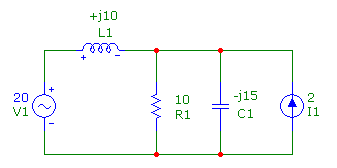
8. Find the voltage across R1, in polar form, using superposition analysis. The source voltages are rms, at 0 degrees.

9. Find the current through R1, in polar form, using superposition analysis. The source currents are rms, at 0 degrees.
